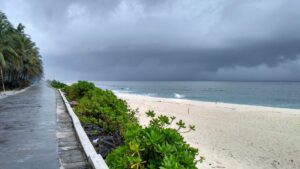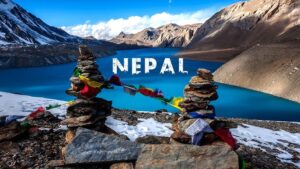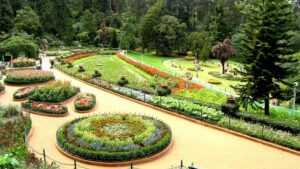Monday to Saturday - 8:00 -17:30
Summer Treks in India to Do 2023
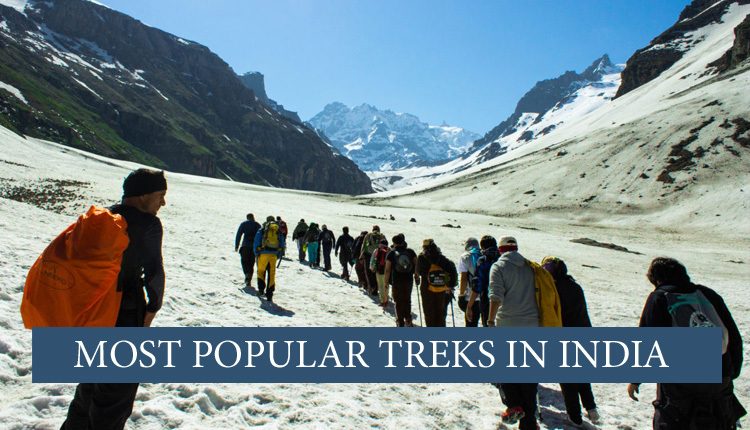
With the arrival of summers, adventure enthusiasts in India start to get excited. From March to June, India becomes the hub of trekking aficionados planning their treks largely in the Indian Himalayas that stretch from Ladakh, Jammu & Kashmir to Himachal Pradesh, Uttarakhand in North India to Sikkim and Arunachal Pradesh in Northeast India.
What makes the summer season the most favourable trekking season in India is the fact that several high altitude and challenging treks open for those wanting to test their strength. The Indian Himalayas become quite accessible inviting both experienced and beginners to indulge in some nerve-wracking adventure.
Rupin Pass Trek
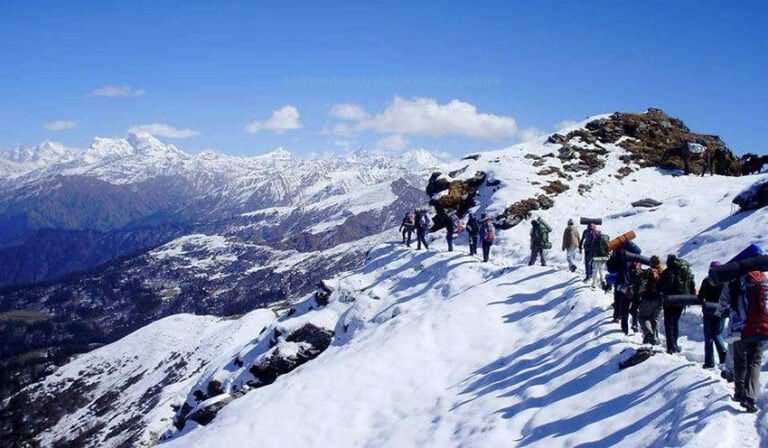
About Rupin Pass Trek
If you are looking for an adventure through a trek route, this is the ideal route for you. You will find twelve such turns and every time, you will stand, bewildered thinking whether you are viewing them or dreaming. The changes in the scene are so rapid and so miraculous that it is beyond the imagination of the best artist in the world. This is a high-altitude pass, with numerous thrills.
Rupin, a high altitude mountain pass, is a part of the traditional shepherd and hiking route, which starts from Dhaula in Uttarakhand and ends in Sangla in Himachal Pradesh. The mountain pass is located at an altitude of 15,250 ft (4,650M), Rupin pass, and can be reached by trekking for six days from Dhola.
Best Time To Explore
The best time to travel to Rupin Pass Trek is in the summers (May – June) and Post Monsoon (September – October).
In Summer: The weather of Rupin Pass Trek remains salubrious and pleasing during summers. The Himalayas are distinctly visible and the cool breeze adds charm to the vacation. Carry woolens with you.
Post Monsoon: Serenity and solitude are at their best during post-monsoon at Rupin Pass Trek. The region is blessed with snowfall during winters and the accommodation options also remain few. But you can see the best of Rupin Pass Trek during post-monsoon as it looks like Heaven on earth.
Kedarkantha Trek
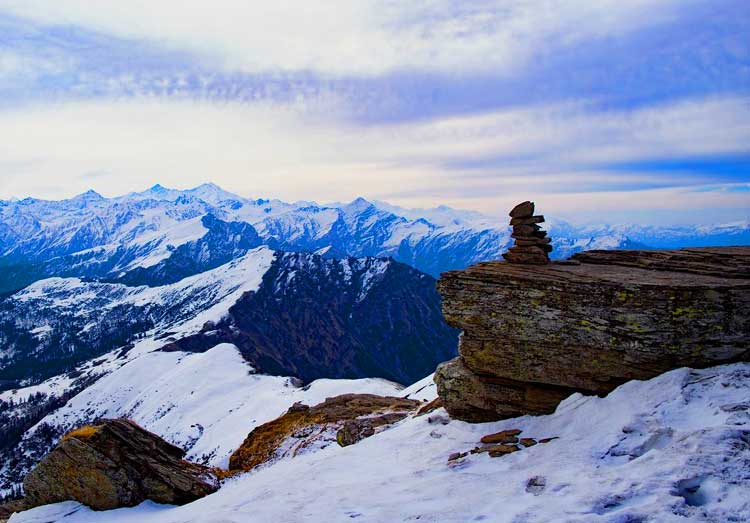
About kedarkantha trek
Kedarkantha Trek Trek is a classic winter trek, perfect for those who are in love with snow. This four days trek has its base camp is at Sankri Village, which takes 7-8 hours of travel from Dehradun.
This wonderful trek offers a great experience to the trekkers with a trail through rich forests, snowy tracks, patches of green meadows, and some beautiful scenic views all the way. Kedar Kantha Peak is located in Govind National Park of Western Garhwal, surrounded by a number of panoramic river valleys, snow-laden mountains, remotely located small villages with a rich flora-fauna. It is one of the easiest treks in the Himalayas to experience the snow covers.
Kedarkantha is a mountain summit, which is standing tall at an altitude of 3850 m in Garhwal Himalayan ranges. The peak can be reached during any time of the year by crossing Govind National park. One trekkers reach the summit, they will be rewarded with the view of beautiful peaks like Swargarohini (6,252 m), Bandarpunch (6,316 m), Black or Kalanag (6387 m) and Ranglana.
Best Time To Explore
In Summer: Mild weather prevails throughout the summer season. (April – June) During this time, one can see a clear view of the neighboring mountains.
In Winter: From the start, till the end, the trail remains covered with snow, thus, the trek becomes a little difficult. (October – March) Trek looks the best during winters, and indeed, the trek becomes more difficult. Carrying heavy woolens is advised.
Beas Kund Trek
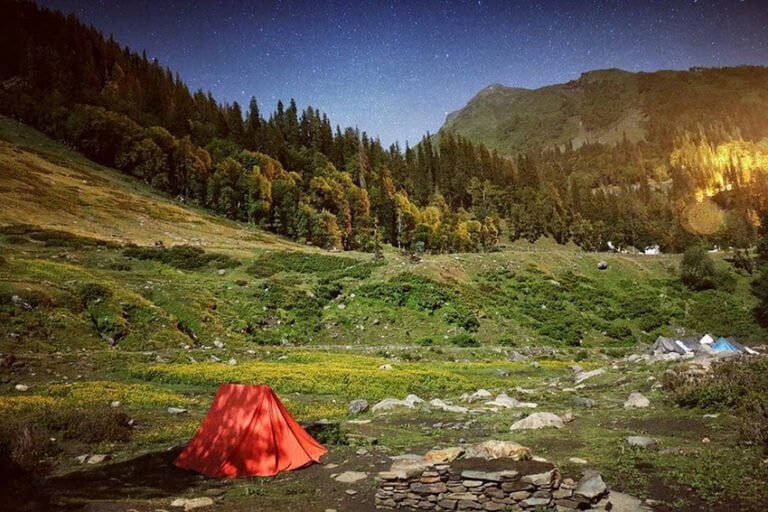
About Beas Kund Trek
The Beas Kund, which is regarded as a holy lake is located in the Kullu Valley and is the original source of River Beas. It is believed that Rishi Vyas used to take his daily bath in the pristine water of this lake that is perched at an altitude of 3,650 meters in the lap of Mt. Hanuman Tibba and Seven Sisters. The Beas Kund Trek, which is considered as one of the easiest treks in the Himachal Himalayan region is also a short trek of three days from the popular hill station of Manali that is tucked at a height of 2,050 meters.
Beas Kund is nestled amidst the Dhauladhar Range in Himachal Pradesh. The Kund is at a distance of 3kms from the meadows of Bakar Thach.
Best Time To Explore
The best time for Beas Kund Trek is between Mid-May and Mid-October. The weather remains quite salubrious making the trek easy and of course thrilling.
Yuksom to Dzongri & Goecha La Trek
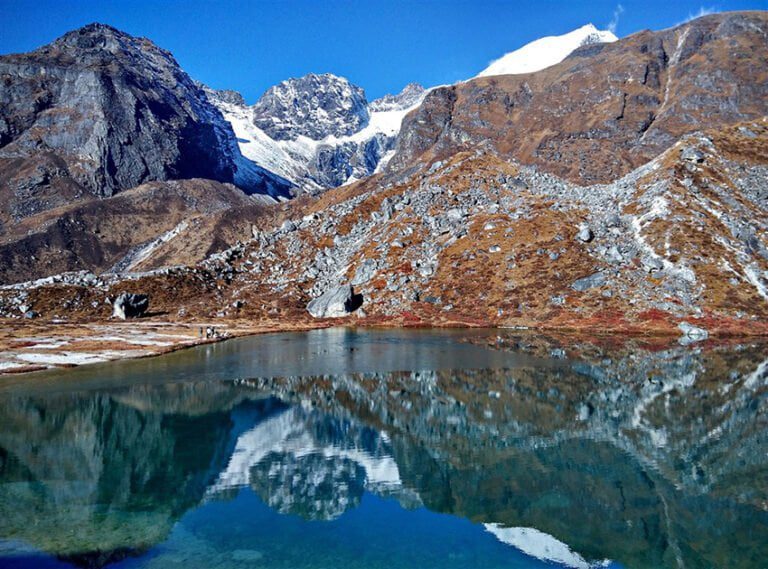
About Yuksom to Dzongri & Goecha La Trek
To capture the panorama of the Kanchenjunga range from a stone’s throw distance, the Dzongri and Goecha La trek from Yuksom is the perfect pick. The journey allows you to travel across the gorgeous alpine forest that melds with the vast biosphere of Sikkim. The trail follows through the vast forest of rhododendrons with downhill and uphill treks through narrow ridges, and rough tracks. The Dzongri and Goecha La trek are no doubt one of the best treks in the Indian Himalayan region, thus mentioned in the diaries of every trekker.
Goecha La is a high-altitude mountain pass that offers a beautiful view of the southeast face of mountain Kanchenjunga. The Goecha La pass is the base camp of many neighboring mountains as well. Trek to Goecha La is flagged off from Yuksom and passes through virgin lands coupled with the towering mountain peaks. The trek is often dubbed as ‘Walking in Paradise.
Best Time To Explore
This part of the trail becomes fully accessible (May – June). There is the slightest chance that you might find light snow in the high altitude areas even in September/October.
Kedar Tal Trek
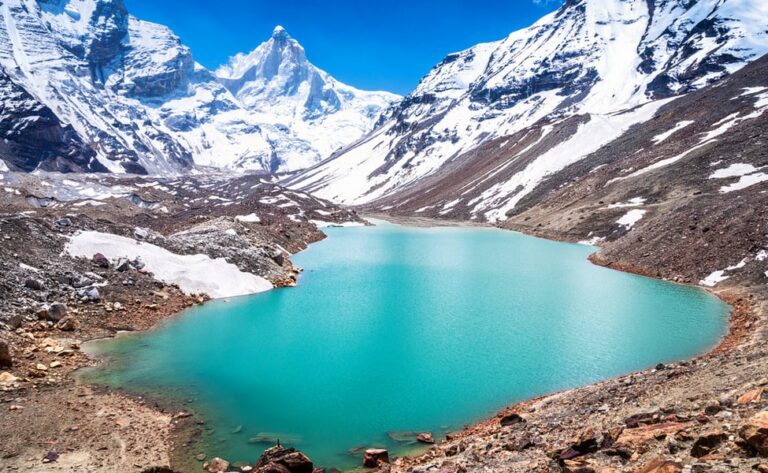
About Kedartal trek
The excellent beauty of Gangotri will be anticipated in the best way when you go for the Kedar Tal trek.Aspiring meadows on both the side of the route is having excellent art and craft, naturally maintained by nature, is going to greet you in all of your turns. So, you will never feel tired, although the route is tough and steep. Kedartal, the extension of the Kedar Ganga has enough mythological merits, although that is covered well with the utmost care from nature god alone.
The trek starts from Uttarkashi. Till Gangotri, the trek route is really tough one, with lots of turns, climbs and rocky surfaces. The meadows and the shades with the unparalleled beauty of nature God will never allow you to feel the tiredness. The route till Bhoj Kharak and from there to Kedartal Lake is filled with excellent flora.
Perched at an elevation of 4,750m, Kedartal, commonly known as Shiva’s lake, is a glacial lake in the Garhwal region of the Himalaya. Three prominent peaks- Thalay Sagar (6,904m), Meru (6,672m), Bhrigupanth (6,772m) -are the source of the lake of origination. To reach the lake, one will have to trek for 17 km through a narrow meandering trail and craggy boulders.
Best Time To Explore
In Summer: The weather of Kedar Tal Trek remains salubrious and pleasing during summers (May – June). The Himalayas are distinctly visible and the cool breeze adds charm to the vacation. Carry woolens with you.
Post Monsoon: Serenity and solitude are at their best during post-monsoon at Kedar Tal Trek (September – mid-October). The region is blessed with snowfall during winters and the accommodation options also remain few. But you can see the best of Kedar Tal Trek during post monsoon as it looks like Heaven on earth
Panchachuli Base Camp Trek
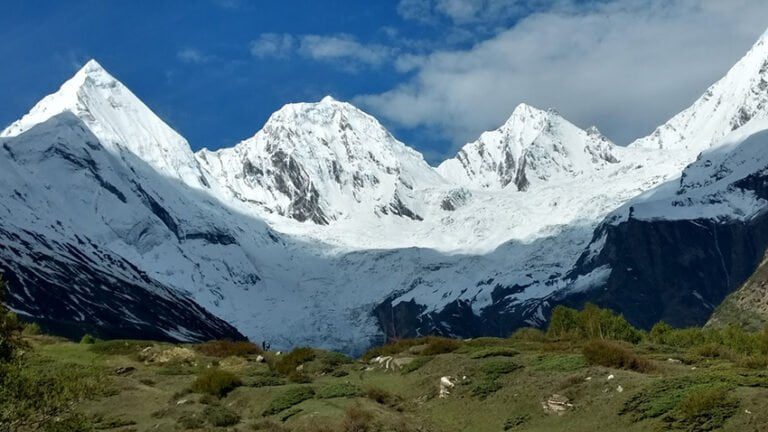
About Panchachuli Base Camp trek
Panchachuli Peak is a famous attraction of Uttarakhand. One of the giant snow-capped Himalayan peaks lying at the end of the eastern Kumaon region. Starting from Almora, the trekking trail passes through Dharchula, Tawaghat, Sobla, Dhar, Sela, Balling, and Duktu, and then finally concludes at Panchachuli.
During the journey, trekkers will come across gorgeous Darma Valley, which offers a splendid view of the Panchachuli peaks. The trail from Duktu to Panchachuli glacier is hard to follow. The trail also goes through several tribal villages like Bongling, Sela, Nagling, Baaling and Duktu and cuts and run through Dhauliganga and thick forests of deodar and Bhojpatra and conifer.
Basecamp of Panchachuli peak is located quite close to the Dantu Bugyal. A strenuous walk through the narrow trails of Son will take you to the Basecamp of Panchachuli. Wildflowers and wild strawberries grow on either side of the narrow path, which has steep climbs and descends till you reach the Basecamp of Panchachuli peak.
Best Time To Explore
In Summer: From mid-March till mid-June are the best time to trek to Panchachuli Base Camp Trek. The sun warms up the cool region of Panchachuli Base Camp Trek and trekkers find it easy to cope with the environment.
In Spring: From Mid-September to late October, the charming spring favors trekkers to make way to Panchachuli Base Camp Trek. Pleasing sun and calm weather.
Darma Valley Trek
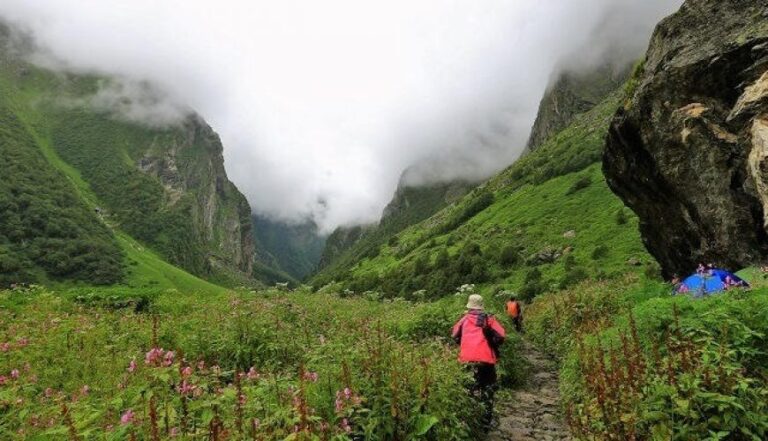
About Darma Valley trek
Darma Valley trek, relatively an unexplored trek, is known for offering mesmerizing scenic beauty. Trekking to Darma Valley can be a little strenuous though it may have easily trekked with sensible trekking techniques. The trek passes through flower-strewn meadows, water streams, and ancient towns, which makes it an absolute delight for the trekkers.
The valley is also known for the flora dotted in the region. Pious for some and adventurous for other, Darma Valley also holds a strong religious connection. According to historians, Pandavas (central characters of Mahabharat) cooked their last meal on the five peaks of Panch Chuli Massif before leaving for heaven.
Darma Valley is situated in the Pithoragarh District of the Kumaon division, Uttarakhand. The valley came into being because of the Darma River. Darma Valley is between two other valleys in the Himalayas – Kuthi Yangti Valley (to the east) and Lassar Yangti Valley (to the west). Gangachal Dhura connects Darma Valley with Lassar Valley, while Sinla Pass and Nama Pass link the Darma Valley with Kuthi Yangti.
Best Time To Explore
In Summer: From months mid-March till mid-June is the best time to trek to Darma Valley. The sun warms up the cool region of Darma Valley and trekkers find it easy to cope with the environment.
In Spring: From Mid-September to late October, the charming spring favors trekkers to make way to Darma Valley. Pleasing sun and calm weather
Sach pass Trek
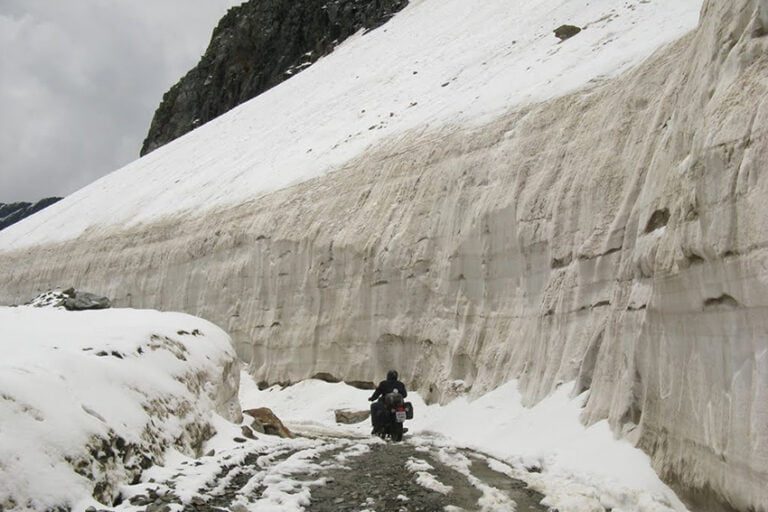
About Sach Pass trek
One of the most challenging treks in Himachal, the only thing that keeps you motivated along the treacherous route to the pass is a surreal view of the beautiful clouds, snow-capped peaks of the Pir-Panjal ranges, precariously hanging glaciers and an inner zeal to make it to the summit. While braving the slippery slopes, making your way through tricky terrains and hideous turns with your teeth clattering in the numb chilling cold, when you finally reach your destination perched at a height of 4400 meters above sea level, that proud feeling of being on top of the world is beyond words.
The Sach Pass is tucked away in the Pir-Panjal ranges of Himalayas in the Chamba district of Himachal Pradesh. The pass connects Pangi and Lahaul valleys with the Chamba valley. You can either cease your journey at the Sach Pass or move ahead to venture into the picturesque Pangi Valley, which still remains the remotest corner in Himachal.
Best Time To Explore
The pass is opened from June-July to mid-October but, the best month to visit it in September. Though in June, chances of sighting the snow are plenty the roads may be in pathetic conditions. Better get on to the journey in September and complete before October.
If you are reading this then, please send your thoughts in the comment box. Thank you!
Disclaimer: We do not take credit for some of the licensed paid images used in our blogs, whether from Google Images, Fotolia & Shutterstock.
All such images are the copyrights of their respective owners and we try to provide credit for them wherever we can. If, however, any copyright image has been used on our blog, the concerned person can either mail us directly to remove the image or provide credit to whomsoever the image may belong.

